Mariani's Virtual Gourmet Newsletter
May 29 2011
Click Here to Return to John Mariani's Homepage
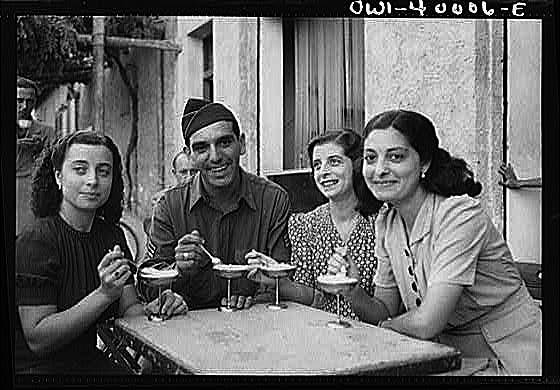
An American G.I. in Italy, 1944 (Library of Congress)
Remember Memorial Day
This Week
by Christopher Mariani
New York Corner: Le
Caprice
by John Mariani
Man About Town: Buffalo Gap Wine and
Food Summit
By Christopher Mariani
Quick Bytes
GOOD NEWS! Esquire.com now has a food section called "Eat Like a Man," which will be featuring restaurant articles by John Mariani and others from around the USA.
Locavore, Shmocavore
For info and reservations, click here.
ABILENE, THAT'S TEXAS
by Christopher Mariani
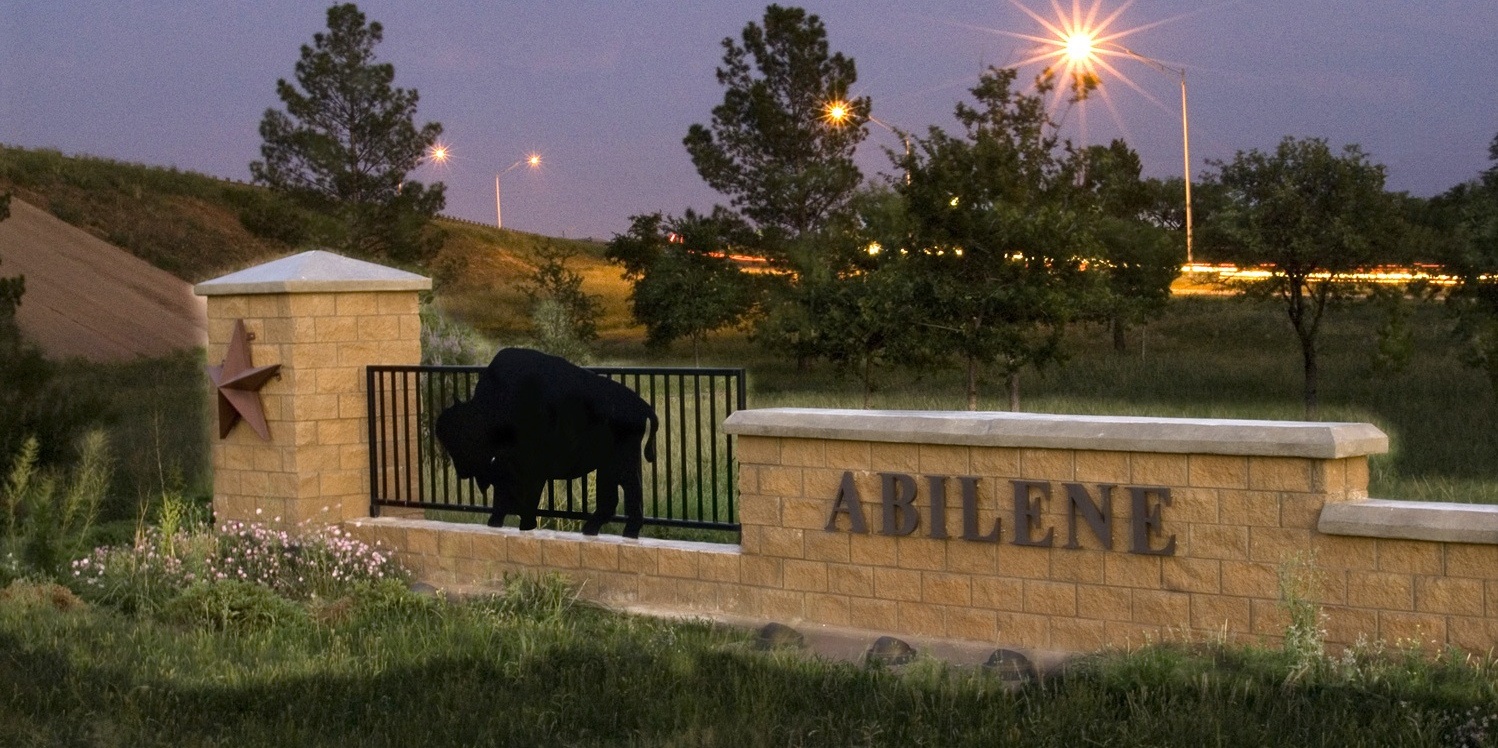
“Abilene,
Abilene,
Prettiest town I’ve ever seen.
Women there don’t treat you mean
In Abilene, my Abilene.
I sit alone
most every night
Watch those trains pull out of sight
Don’t I wish they were carrying me back
To Abilene, My Abilene.”
Lyrics by Bob Gibson and John
Loudermilk,
recorded and performed by George Hamilton IV in the 1963
movie
“Hootenanny Hoot.” Take a listen at YouTube.com
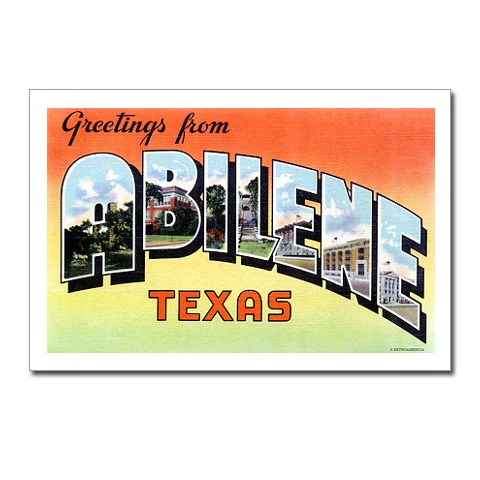
On a recent
flight to
Abilene, Texas I was sitting next to a US Army soldier in full uniform
and
noticed both of his legs were shaking like mad and his hands were
gripped tight
around his armrests. Immediately I became concerned as to what might be
troubling him. My eyes cautiously made their way up to his face only
to find he was staring right at me, eyes wide-open and bursting with
energy.
Before I could even ask what was wrong, with great excitement he nearly
shouted, “When we land I’m getting picked up by my wife!” I quickly
realized
there was nothing wrong with this giddy soldier, he was just anxious to
get
home and wrap his arms around his lady.
After a brief introduction,
I found out his travel back home began seven days earlier in Iraq,
flying to Turkey,
then to Germany, then Baltimore to Dallas Fort Worth and finally,
Abilene. He
was on the last stretch of his long journey and was clearly overwhelmed
with
joy. It had been one year since he’d seen US soil and what he missed
most was
the company of his beautiful wife and children, clean clothes, a real
shower
and edible comfort food. I smiled and couldn’t be more delighted that
this fine soldier
would soon have all he yearned for, most of all the love and affection
of his
family.
I kept things casual and asked, “So what are you
going to eat your
first night back in Abilene?” The thought of a home-cooked meal nearly
brought
tears to this man’s face when he replied, “Steak!” It was then I
realized I was en route to America’s Cattle Country. West Texans don’t
eat much lamb, pork or
veal. They eat beef. Twenty minutes later we touched down in Abilene
and before
I could extend my hand to say goodbye to my new friend, he had darted
to the
front of the plane to reunite with his family. I smiled and spoke
softly, “Go
get em’ , James.” I never saw James again, but I can guarantee he got
all the
love and steak he could handle that evening.
in Abilene
and before
I could extend my hand to say goodbye to my new friend, he had darted
to the
front of the plane to reunite with his family. I smiled and spoke
softly, “Go
get em’ , James.” I never saw James again, but I can guarantee he got
all the
love and steak he could handle that evening.
Up until this visit to
Abilene and Buffalo Gap, my only exposure to the vast state of Texas
was the
booming city of Dallas. According to many West Texans, Dallas is just
another
city, “like all the rest. This here is the real Texas.” These friendly
folks
couldn’t be more right. I landed in the heart of the old frontier and
began to
realize I was the only man in town without a gorgeous pair of
custom-made
cowboy boots wrapped snug around my feet like, as every Texan will tell
you, “a
pair of socks.” I guess my mahogany penny loafers were a sure giveaway
that I
was from out of town, and if that didn’t do it, the second I opened my
mouth
heads turned.
Abilene is a charming
little city about a two-and-half hour drive (or 35-minute flight) west
of
Dallas/Fort Worth and has just over 100,000 residents. The city is
centered
around a lively downtown area filled with history and art museums, a
handful of great little restaurants and an enchanting
chocolate shop
called Vletas,
stocked
high
with
chocolate-covered toffee, pecan and
walnut
pralines, cinnamon covered nuts and much more. I bought so much
chocolate from
Vletas I had it FedEx back to New York to avoid being charged by our generous airlines for being over the
ever-decreasing weight limit per bag.
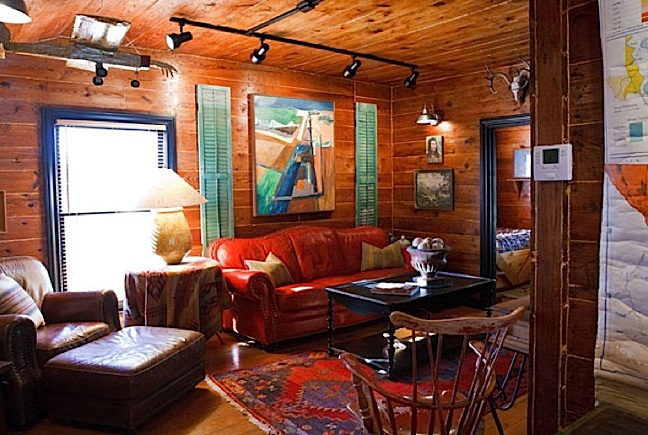 After
a
quick
tour
of
the
Frontier Texas! Museum,
where
I
learned
of the hardships endured
over 200 plus
years ago by those insanely brave Americans who pioneered this once
dangerous
land, filled with deadly rattle snakes, hungry wolves, the constant
risk of
being trampled by a ground-shaking buffalo stampede, and not to mention
surprise attacks from native Indian tribes, I finally settled into one
of the Sayles Ranch (left)
guesthouses, a genius concept created by founder Terry
Browder.
Imagine walking into a house with walls covered from head to toe in old
cabin
wood, antlers sticking out of the walls, stuffed goat heads hanging in
the
living room, Indian tapestry layered over almost every piece of
furniture and yet
the modern amenities of wireless internet and a 52-inch flat screen
high
definition television. Each room is different in design and continued
to
impress as I walked in awe, slowly opening closed doors with great
anticipation
to find yet another room splattered with magnificent artwork and
carefully
placed adornment. The walls of the kitchen were blanketed with old
American license
plates from almost all fifty states. There’s even an oven, stove,
washing
machine, dryer and every possible courtesy one could need to feel at
home. I pulled
on the refrigerator door and peeked inside to find three Shiner beers
standing
upright, ice-cold, clearly left behind by a previous guest. I grabbed a
bottle,
splashing the kitchen floor with condensation, popped off the cap and
gulped
down a refreshingly crisp, bubbly mouthful of the Texas-brewed beer. I
quickly felt
at ease.
After
a
quick
tour
of
the
Frontier Texas! Museum,
where
I
learned
of the hardships endured
over 200 plus
years ago by those insanely brave Americans who pioneered this once
dangerous
land, filled with deadly rattle snakes, hungry wolves, the constant
risk of
being trampled by a ground-shaking buffalo stampede, and not to mention
surprise attacks from native Indian tribes, I finally settled into one
of the Sayles Ranch (left)
guesthouses, a genius concept created by founder Terry
Browder.
Imagine walking into a house with walls covered from head to toe in old
cabin
wood, antlers sticking out of the walls, stuffed goat heads hanging in
the
living room, Indian tapestry layered over almost every piece of
furniture and yet
the modern amenities of wireless internet and a 52-inch flat screen
high
definition television. Each room is different in design and continued
to
impress as I walked in awe, slowly opening closed doors with great
anticipation
to find yet another room splattered with magnificent artwork and
carefully
placed adornment. The walls of the kitchen were blanketed with old
American license
plates from almost all fifty states. There’s even an oven, stove,
washing
machine, dryer and every possible courtesy one could need to feel at
home. I pulled
on the refrigerator door and peeked inside to find three Shiner beers
standing
upright, ice-cold, clearly left behind by a previous guest. I grabbed a
bottle,
splashing the kitchen floor with condensation, popped off the cap and
gulped
down a refreshingly crisp, bubbly mouthful of the Texas-brewed beer. I
quickly felt
at ease.
That evening, escorted
by two of Abilene’s most lovely ladies, Shanna Smith Snyder and Nanci
Liles from
the Abilene CVB, we
dined at Cypress
Street Station (right),
a
charming
restaurant
in
the
downtown
area packed nightly with locals. After a Manhattan on the
rocks, I had
the pleasure of meeting owner Brian Green, a local celebrity who
strolls
the dining room with a hint of swagger, humbly shaking the hands of
every guest
and even pulling up a seat with friends for a pint of one of his five
house
made brews.
There is a large brick wall that divides a graceful
dining room and
a sporty bar room surrounded by flat screen TV’s. The menu is comprised
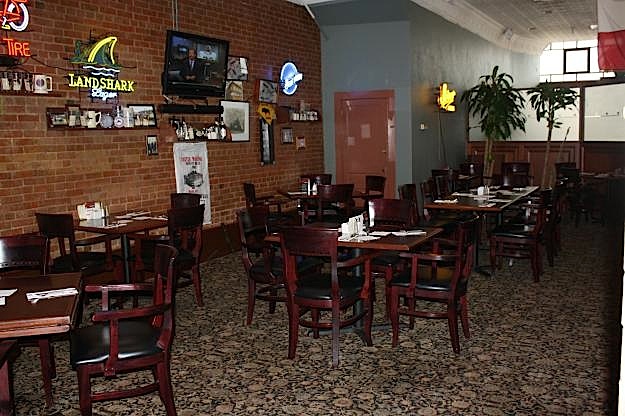 of
fairly typical bar items, including bacon-cheese potato skins, chicken
quesadillas, pastrami reuben sandwiches, burgers topped with green
chili, and
even a 12-inch pizza. After a nice selection of crispy appetizers and a
tableside-made Caesar salad--one of the best I’ve ever had--I ordered a
well-fatted, 15-ounce bone in ribeye topped with a thin layer of
gorgonzola
cheese. For dessert, rich, gooey pecan pie is served in a wine glass
topped
with vanilla ice cream, caramel sauce and whipped cream. After I
scooped out the
last morsel of sweet pie, we stepped outside for a leisurely walk and
witnessed
what could easily have been a Youtube sensation. A California
blond-haired rock
n’ roller was jamming out on the sidewalk with an electric guitar while
a
three-foot high industrial strength fan was set up to blow a gust of
wind
towards his hair as if he was partaking in a 80’s MTV music video.
There was
also a neon blue spotlight blaring onto this unique musician.
Absolutely priceless, reminding me of the great Joni Mitchell song
about a street musician who "was playing real good for free." We then
proceeded to mosey down the quaint streets of downtown Abilene where
residents were in abundance, enjoying the city’s monthly Art Walk,
an
opportunity
to
promote
art, culture and Texas history.
of
fairly typical bar items, including bacon-cheese potato skins, chicken
quesadillas, pastrami reuben sandwiches, burgers topped with green
chili, and
even a 12-inch pizza. After a nice selection of crispy appetizers and a
tableside-made Caesar salad--one of the best I’ve ever had--I ordered a
well-fatted, 15-ounce bone in ribeye topped with a thin layer of
gorgonzola
cheese. For dessert, rich, gooey pecan pie is served in a wine glass
topped
with vanilla ice cream, caramel sauce and whipped cream. After I
scooped out the
last morsel of sweet pie, we stepped outside for a leisurely walk and
witnessed
what could easily have been a Youtube sensation. A California
blond-haired rock
n’ roller was jamming out on the sidewalk with an electric guitar while
a
three-foot high industrial strength fan was set up to blow a gust of
wind
towards his hair as if he was partaking in a 80’s MTV music video.
There was
also a neon blue spotlight blaring onto this unique musician.
Absolutely priceless, reminding me of the great Joni Mitchell song
about a street musician who "was playing real good for free." We then
proceeded to mosey down the quaint streets of downtown Abilene where
residents were in abundance, enjoying the city’s monthly Art Walk,
an
opportunity
to
promote
art, culture and Texas history.
 The following day,
again with the company of my two wonderful hosts, Shanna and Nanci, we
dined at
the Beehive Restaurant
on
Cedar Street, where I tasted my first true
Texas
chicken fried steak (left)
with white gravy. Owner Nariman Esfandiary stopped
by our
table to say hello and with great eagerness immediately asked me if I
had ever
had a chicken fried steak. I replied “No, sir.” Nariman smiled and said
proudly,
“Why don’t you try that.” Chicken fried steak is made with either a top
round
or ribeye cut of steak, pounded thin with a mallet, as would a piece of
veal
for a veal Milanese or a chicken for a chicken cutlet, then battered
with flour,
egg, a splash of milk, salt and pepper, then either sautéed in a
skillet of oil
and a touch of butter or thrown right into the deep fryer. The nearly
one-foot order of very tender beef comes served with a big bowl
of white gravy. I only knew of two gravies prior to this experience,
brown gravy served during Thanksgiving
dinner and red gravy, a term often used by Italian Americans to
describe
marinara sauce. In the south, white gravy always served
alongside
chicken fried steak and biscuits (below).
The following day,
again with the company of my two wonderful hosts, Shanna and Nanci, we
dined at
the Beehive Restaurant
on
Cedar Street, where I tasted my first true
Texas
chicken fried steak (left)
with white gravy. Owner Nariman Esfandiary stopped
by our
table to say hello and with great eagerness immediately asked me if I
had ever
had a chicken fried steak. I replied “No, sir.” Nariman smiled and said
proudly,
“Why don’t you try that.” Chicken fried steak is made with either a top
round
or ribeye cut of steak, pounded thin with a mallet, as would a piece of
veal
for a veal Milanese or a chicken for a chicken cutlet, then battered
with flour,
egg, a splash of milk, salt and pepper, then either sautéed in a
skillet of oil
and a touch of butter or thrown right into the deep fryer. The nearly
one-foot order of very tender beef comes served with a big bowl
of white gravy. I only knew of two gravies prior to this experience,
brown gravy served during Thanksgiving
dinner and red gravy, a term often used by Italian Americans to
describe
marinara sauce. In the south, white gravy always served
alongside
chicken fried steak and biscuits (below).
According to a waitress at the Dixie Pig
Diner on Butternut Street, who said I could stop by her house
anytime I
please for
a taste of real gravy, explained in detail how to prepare the
southern
recipe.
Start off with the excess lard and fat from cooked bacon, heat it up,
nice and
hot, add a little flower to thicken up the texture, cook until the
flour begins
to brown, toss in some salt and pepper, and then slowly add milk.
That’s it. As
simple as this recipes may seem, the outcome is simply
delicious. I
was told not to dare order a
chicken fried steak outside of Texas, but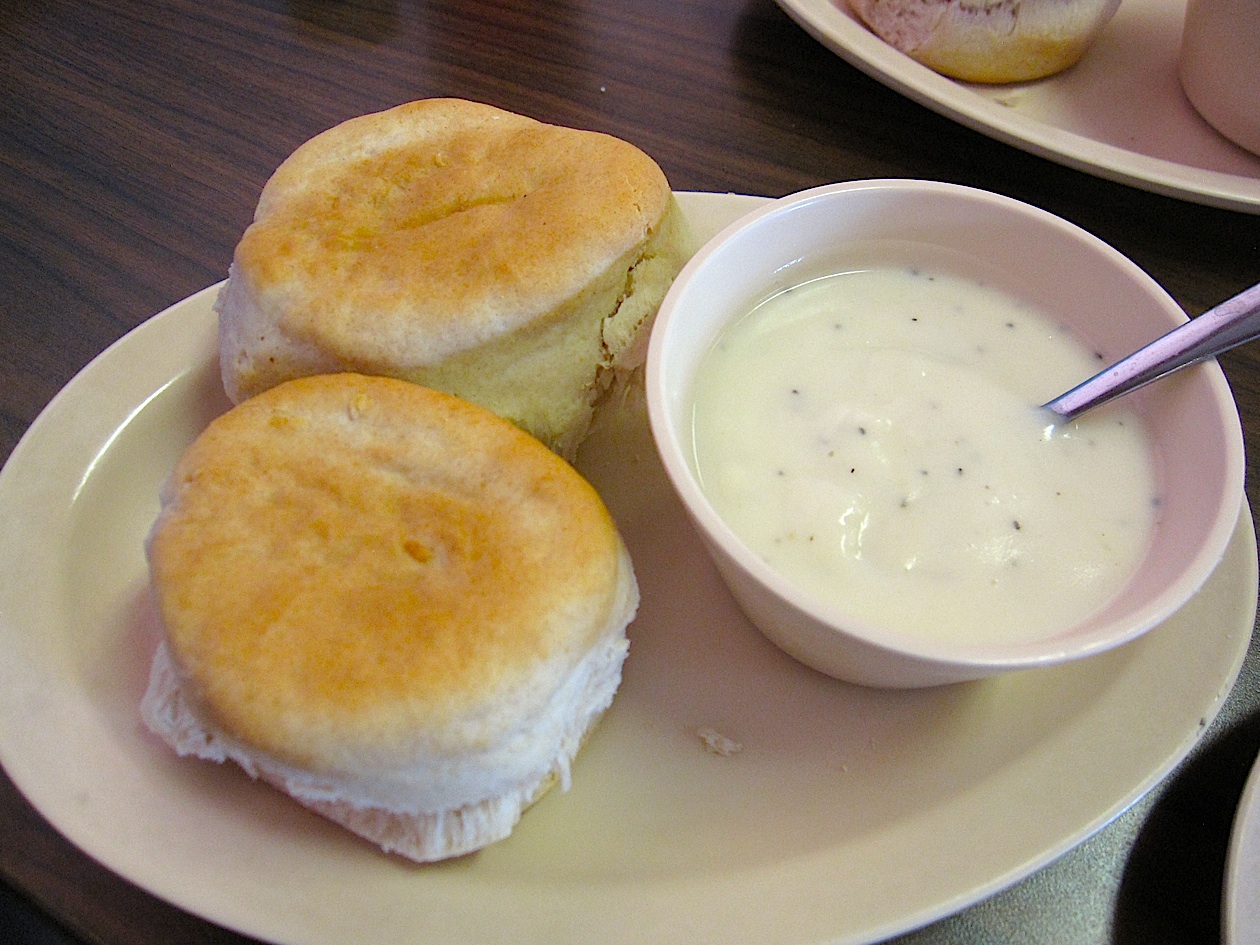 of
course that advice was given to me by a proud Texan. Although Nariman
is
not a native born Texan, originally from Iran, he is known as having
the best
chicken fried steak in town. He explained that he and his brother Ali
came to
the States full of vigor and the dream of opening a restaurant. He
quickly
realized that dream would not be as easy as hoped for when he said to
me, “Chris,
imagine this, in 1983, two Iranian brothers walking into a bank in West
Texas
and asking for a loan to open up a restaurant. The banker literally
kicked us
out of the bank before we could finish asking our question.”
of
course that advice was given to me by a proud Texan. Although Nariman
is
not a native born Texan, originally from Iran, he is known as having
the best
chicken fried steak in town. He explained that he and his brother Ali
came to
the States full of vigor and the dream of opening a restaurant. He
quickly
realized that dream would not be as easy as hoped for when he said to
me, “Chris,
imagine this, in 1983, two Iranian brothers walking into a bank in West
Texas
and asking for a loan to open up a restaurant. The banker literally
kicked us
out of the bank before we could finish asking our question.”
After the help of
some local Texans that loan was finally issued. A few months later,
just one
day before the grand opening, Nariman and his brother thought they had
accomplished their dream, yet they still were under the impression that
chicken
fried steak was made with chicken. That same day, an elderly woman
walked into
the original Beehive in Albany, Texas, and asked to be seated. Nariman
informed the
lady that they would not be open until the following day. As the lady
walked
out, Nariman ran after her and stopped her to ask, “Excuse me ma’am, my
brother
and I have been arguing about what exactly is a chicken fried steak.
It’s fried
chicken, right?” Nariman explained to me he would never forget
the words told to him
by this older woman who said, “You boys are opening the doors tomorrow
and
don’t know what a chicken fried steak is, you’re in for a schooling.
Get your
brother and come over to my house, I will teach you a few things.”
Nariman and
his brother took a crash course on how to cook some local favorites in
just a
few hours. The following day they opened up shop and were thrown right
into the
fire. They learned awfully quick how to cook Texas fare and within a
short
period of time were claimed one of West Texas’ best restaurants.
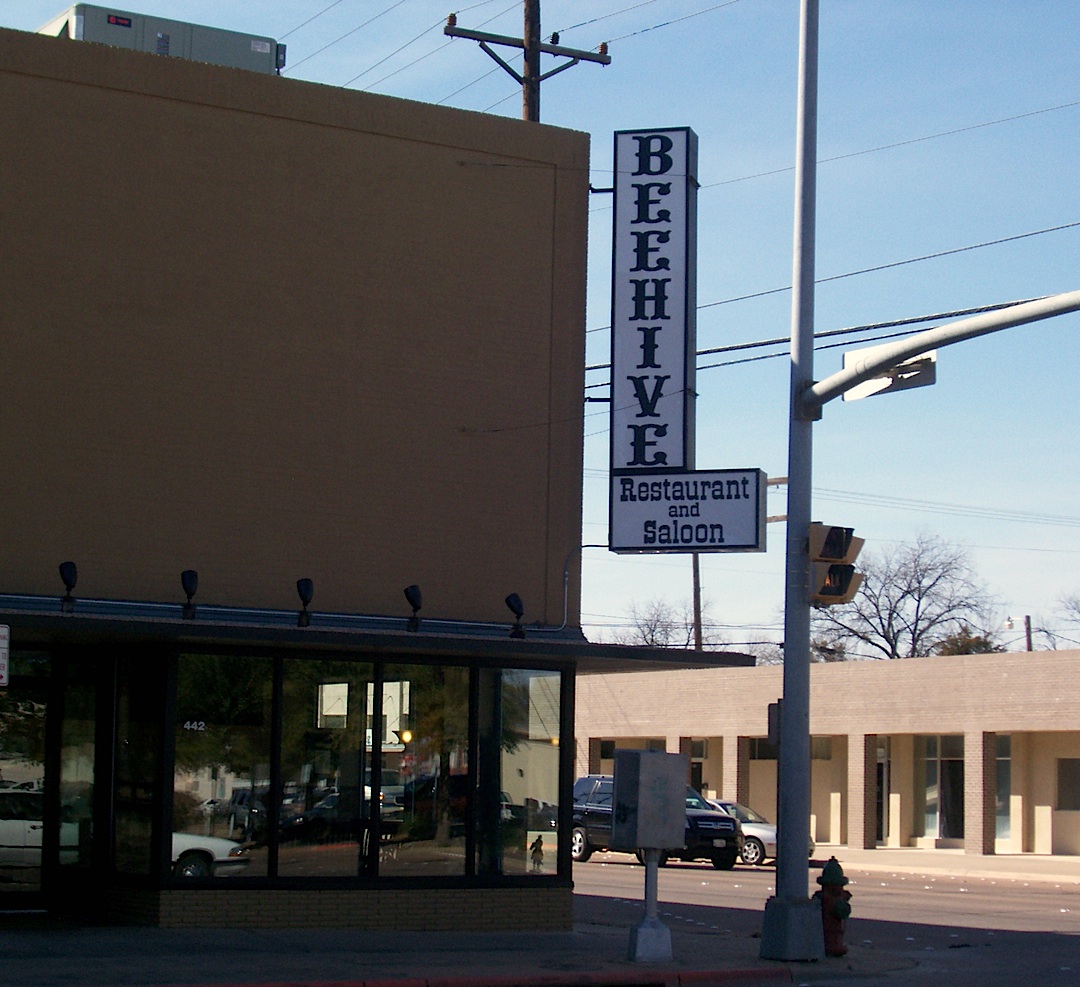 After a wonderful
weekend at the Buffalo Gap Wine and
Food Summit (see
article below in the Man About Town column), touring the culturally
rich city of Abilene, I found myself back at
the Abilene
Airport waiting for my flight to DFW, and of
course it was delayed. I walked up to the American Airlines ticket
counter and
asked if
there were any updates on the flight status. A very sweet woman looked
up at me
and with plenty of Texas twang, her motherly voice responded,
“Sweetheart,
they’re almost done fixing the emergency floor lights and then I will
get you
on that plane as soon as possible. Sorry for the wait, young man.”
After a wonderful
weekend at the Buffalo Gap Wine and
Food Summit (see
article below in the Man About Town column), touring the culturally
rich city of Abilene, I found myself back at
the Abilene
Airport waiting for my flight to DFW, and of
course it was delayed. I walked up to the American Airlines ticket
counter and
asked if
there were any updates on the flight status. A very sweet woman looked
up at me
and with plenty of Texas twang, her motherly voice responded,
“Sweetheart,
they’re almost done fixing the emergency floor lights and then I will
get you
on that plane as soon as possible. Sorry for the wait, young man.”
I
said,
“Thank
you.
Are
there
any
direct
flights
from
Abilene
to
NY’s
JFK
Airport
so
I
can
avoid
situations like this in the future?”
Again she looked up
and then smirked at me, “Honey, when in Abilene, whether you’re heading
to
heaven or hell, you must first go through Dallas, Fort Worth.” I smiled
and sat
back down.
It seems there's an
interesting story behind everything and everyone in the city of
Abilene.
Whether your touring the Abilene
Zoo, the Grace Museum,
or
just
dining
around
town,
stop and make it a point to talk to these fine folks. And
remember, when
driving past any person in Abilene, give em’ a smile and a wave. It’s
rude if
you don’t.
Click
Here
to
Return
to
John
Mariani's
Homepage
Le Caprice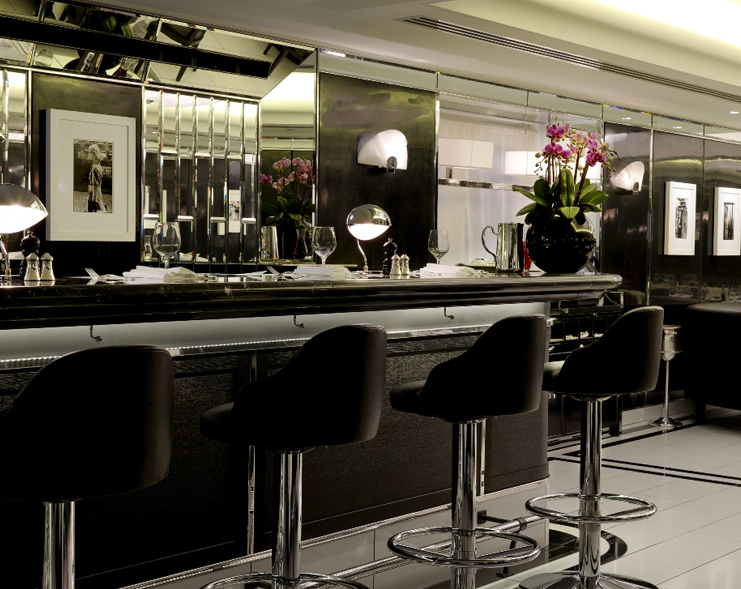
Pierre Hotel
795
Fifth Avenue (at 61st Street)
212-940-8195
www.capriceny.com
Now
eighteen months old, Le Caprice in The Pierre Hotel has settled in as a
sophisticated competitor to the frantically Italian Harry
Cipriani in the adjacent Sherry Netherlands and the historic but
lifeless Oak Room at the Plaza across the street. Upon opening,
Le Caprice assumed it would immediately draw the same clientele that
its owners, Richard Caring's Group, attract at the original Le Caprice,
which opened in 1947 in London, as well as The Ivy and Scott's, but
that didn't work out too well, and New Yorkers didn't quite embrace the
place with open arms.
Since then the owners have tried very hard to
embrace everyone, cordial to all guests, with a staff led by manager
Gillian Dixon, whose Canadian amiability is genuine, in a long, swank
room done in black
and
white, with fashion photos by 1960s celeb photog David
Bailey. The room certainly gets its share of celebrities and
global visitors, who include London regulars, fashionistas, and
hunched-over, unshaven men in t-shirts who could probably buy the
Pierre.
There's a new chef onboard, an American named Edward
Carew, whose résumé includes stints at Spiaggia in
Chicago, Gramercy
Tavern and Fiamma in NYC, and as chef-owner at The Cottage Eatery in
Tiburon, CA. At Le Caprice he keeps many of the favorite
dishes of longstanding from the London original while adding his own
touches day by day.
On a lovely spring evening, with a room about
three-quarters full midweek, we ordered cocktails, and our charming
waitress Brianna already knew my preference for a daiquiri, which came
from the bar impeccably made; there is also a menu of cocktails (which
range from a brow-rising $17 to $21) to choose from, including a Fleur
de Pologne made of Zubrowska vodka, St. Germain, apple cider, lemon
juice, mint leaves and orange bitters that my wife pronounced to a
genteel pick-me-up. There is also a Bar Menu of items like Scotch eggs,
smoked salmon, and the Caprice burger.
For
starters, chilled lobster
with tender fava beans, samphire and toasted brioche sounded like a
capital idea for spring and it proved to be, with sweet lobster and
those wonderful beans, and the samphire (an herb much favored in
Britain) added a fine aromatic touch. Heavier but no less
delicious was braised bacon--the belly of the beast--with Manila clams,
green garlic, and cannellini beans, making for a balance of the
delicate with the very rich. There are three pastas offered each
evening
(Carew's Tiburon restaurant was Italian), and we enjoyed both a tagliatelle with a wild
boar ragù and
Parmigiano and a
marvelous, perfectly cooked risotto with morels and the best asparagus
of the season.
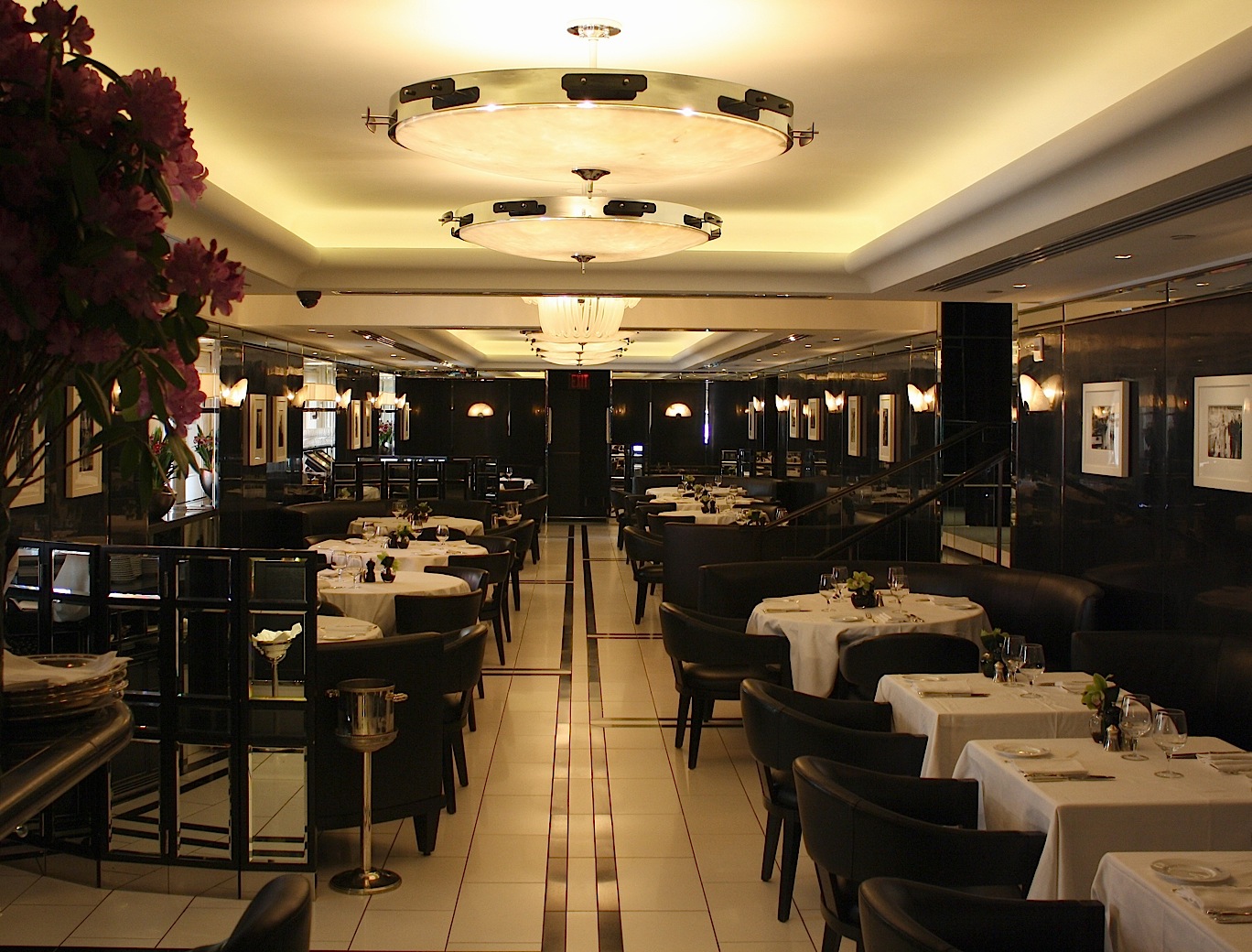 For main courses you can play it
traditional with a
veal Milanese, nice and crisp, with an arugula and Parmigiano
salad, or a golden-brown roast chicken, generously proportioned,
with morels, fingerling potatoes and peas. Both dishes, like all
else here, gain from the seasonality of the vegetables, which I could
easily gobble up with or without the meat. Wild salmon (left), silky and mild, came with
peas and freekah--an Arab
toasted green wheat you don't see everyday on American menus, and it
added a pleasing texture and nuttiness to the dish, further enhanced by
crème fraîche. I also loved the buttery diver's scallops,
plump and meaty, with a snail and mushroom bordelaise and green garlic.
For main courses you can play it
traditional with a
veal Milanese, nice and crisp, with an arugula and Parmigiano
salad, or a golden-brown roast chicken, generously proportioned,
with morels, fingerling potatoes and peas. Both dishes, like all
else here, gain from the seasonality of the vegetables, which I could
easily gobble up with or without the meat. Wild salmon (left), silky and mild, came with
peas and freekah--an Arab
toasted green wheat you don't see everyday on American menus, and it
added a pleasing texture and nuttiness to the dish, further enhanced by
crème fraîche. I also loved the buttery diver's scallops,
plump and meaty, with a snail and mushroom bordelaise and green garlic.
Now,
of
course
an
Anglo
restaurant
like
the
French-named
Le Caprice needs to
serve fish and chips, and Carew does his very best with this pub dish,
keeping the hefty piece of cod tender and not mushy, succulent beneath
a crispy batter, served with "mushy peas" (a Brit infatuation
from the nursery)
and tartare sauce. I could eat it twice a week.
Desserts are gooey and irresistible, from a
crestfallen Pavlova blueberry meringue "mess" to a sticky steamed plum
pudding lavished with custard, the kind of desserts you want to take
across to Central Park and eat sitting under a tree watching for the
White Rabbit to appear.
My only head-scratching disappointment at Le Caprice
is the feeble wine list, which requires a good deal of time to choose
from, not because there are so many selections but because there are so
few, and so many stratospherically priced. They need more wines
and more
of them under $50.
Le Caprice
seems to function on at least two levels, as a home away from home for
foreign visitors and as a place Americans--and that includes New
Yorkers--can easily adopt as their own. And believe it or not,
prices are down by a dollar or two from the last time I visited.
Carew is canny in using very few ingredients
to superior effect, for this is not intended to be fancy haute cuisine,
merely damn delicious cooking, which is a delicate balance to achieve,
especially when you have a regular crowd who cringes at change.
He is a subtle chef and I expect within six months he will be
distinguishing himself even more.
Click Here to Return to John Mariani's Homepage

MAN ABOUT TOWN
by
Christopher Mariani
Buffalo Gap Wine and Food Summit
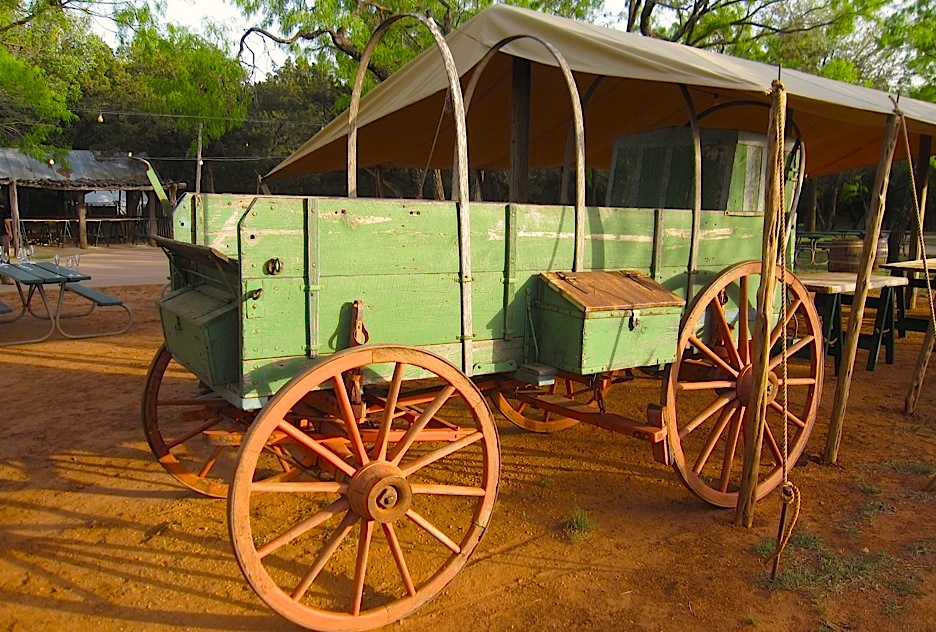
The sun was just
beginning
to fall in West Texas and the calm sky burned bright orange. Streaks of
mysterious purple lay deep between the silky, amber clouds and gave
clue that
the darkness of night was near. Shanna and I walked across the parking
lot and
stirred up a small haze of red dust with every step. We approached a
giant
white tent and saw a man leaning against the trunk of a wide tree. It
was Tom
Perini. Most men 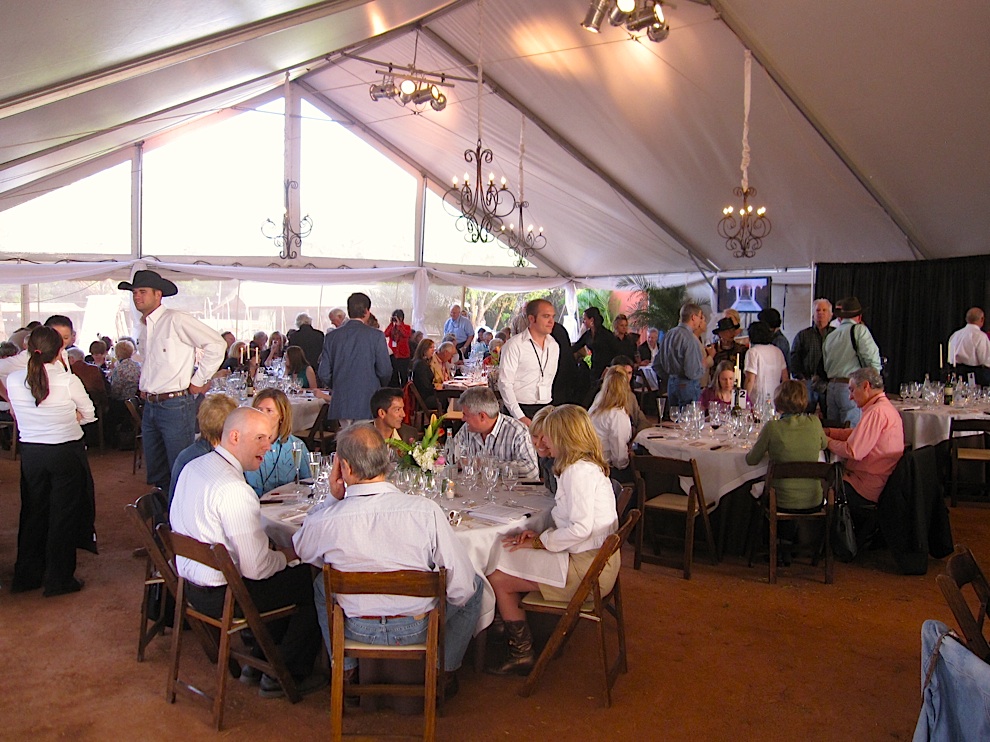 of
Tom’s status would not be outside greeting his guests, but
that is what makes Tom different. He wanted to meet everyone that
entered the
property. His welcome was grand.
of
Tom’s status would not be outside greeting his guests, but
that is what makes Tom different. He wanted to meet everyone that
entered the
property. His welcome was grand.
For
the
last
seven
years
Tom
has
hosted
the
Buffalo
Gap Wine and Food Summit at
his
very own ranch. The event arouses excitement among local ranchers and
Texas wine
makers who all show up wearing their finest custom-crafted boots,
leather belts
fixed with extravagant silver or gold buckles and beautiful rawhide
cowboy
hats. The women too wore cowboy hats, not all, but those who did
clearly spent
much time positioning the direction in which their hair would cascade
from within.
The
evening
began
outdoors
where
everyone
assembled
for
a
few
glasses of sparking
wine and crunchy crostini topped with
velvety goat’s cheese. The chatter grew with every sip of Champagne and
it was evident
most attendees knew each other well. I, of course, was the new guy, yet
it
didn’t feel that way. Everyone was warm. I shook the hands of many
guests and
was continuously asked where I was from. Being from the big city
awakened
immediate excitement and conversation.
In the distance, a
small entourage of white coats walked toward the kitchen. It was chef
Stephen
Pyles and cast. That evening, Stephen would prepare a grand feast for
all who
were present.
After
another
glass
of
Champagne
we
headed
towards
the
white
tent where we sat down
at a round table draped with a white a tablecloth topped with over
thirty empty
wine glasses, all waiting to be filled. Six other guests dined with us
at our
table, three men and three women. The tent held around 500 people. The
first
course arrived and many guests grew curious. They squinted to get a
better
look, picked up the small shot glass and smelled its contents. Some
even poked
at it with a fork.
“And for your first
course, chef Pyles has prepared a saffron oyster shooter, please
enjoy,” said
our lovely waitress. Everyone’s eyes squinted 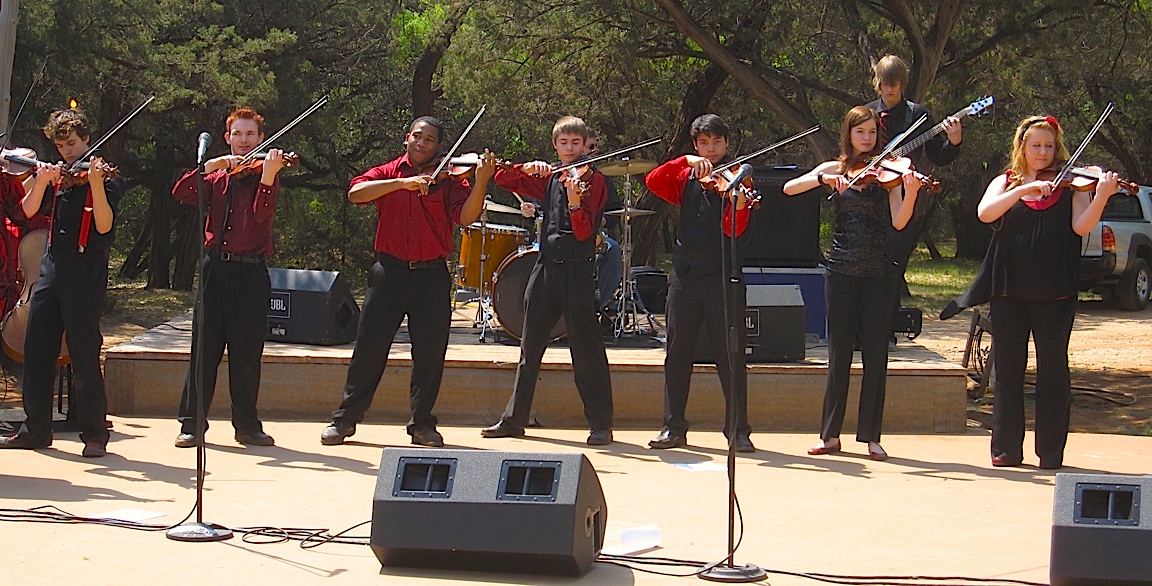 even
tighter.
I
smiled
to
myself
as
one
courageous
man
picked up the yellowish mixture and shot it down
in one
quick motion and grinned to let the others know it was okay. It was
obvious
that oyster shooters were not a common amuse
bouche in West Texas. We all laughed and took our shots.
even
tighter.
I
smiled
to
myself
as
one
courageous
man
picked up the yellowish mixture and shot it down
in one
quick motion and grinned to let the others know it was okay. It was
obvious
that oyster shooters were not a common amuse
bouche in West Texas. We all laughed and took our shots.
Shortly
after, a rectangular cube of foie gras
mousse topped with candied bacon arrived to the table. The sweet,
crunchy bacon
added a hickory flavor to each mouthful of the rich, silky liver. Each
bite was
washed down with a sip of chilled Sauternes. The meal achieved
undiminished excellence
when Pyles sent out a beautiful cut of seared tenderloin seasoned with
salt and
pepper, laid over a pool of dark bordelaise sauce and topped with a
generous
portion of buttery bone marrow. There was not a plate in sight that had
not
been cleaned with bread to absorb every last drop of sauce and salty
beef jus.
At
this point all of us sat back in our chairs at ease and gave a little
pat to
our stomachs to show appreciation for such a splendid meal. There must
have
been at least three or four glasses of red wine in front of each guest,
many
from local Texas wineries, and one brawny rancher to my left took all
three
glasses of his red and poured them into one, stating he had created a
magnificent blend. I didn’t try this magnificent
blend, but who knows, maybe it was good. I highly doubt it.
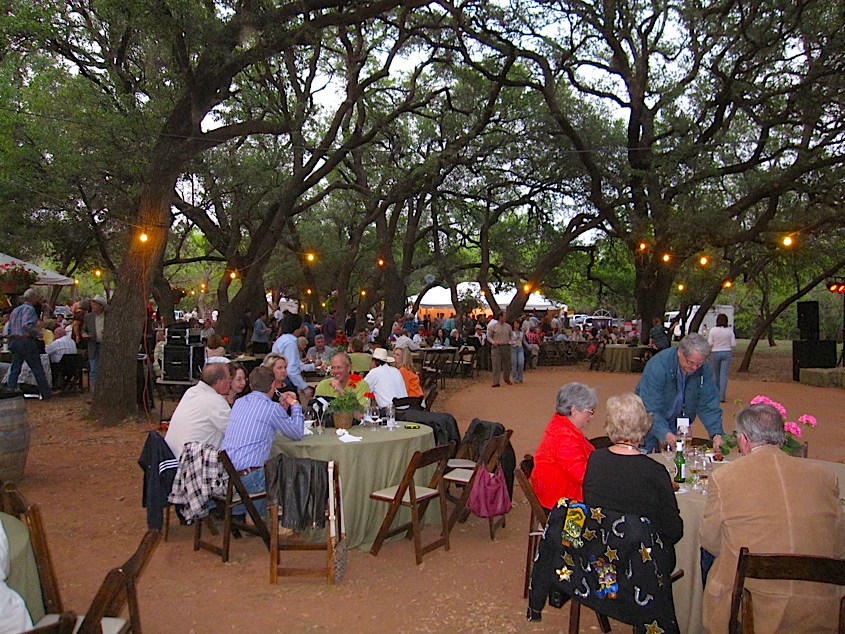 The
following
morning,
for
those
brave
men
and women able to rise after such a
gluttonous
evening, the festivities continued with a wine tasting at 10 a.m. under
the
same white tent. For the most part, the white wines from Texas were
very
crisp and clean, most wineries making it clear they do not age their
whites for
long and stay away from the California wave of abundant oak and vanilla
flavors. The Texas reds are typically full of tannin and could never be
drunk
alone, only appreciated when paired with a big hunk of well-fatted
beef, as
flawlessly stated by one of the attendees, who said, “Nothin’ better
than a
slab and a cab.” I must agree, but if drunk alone, prepare to pucker
up.
Notable Texas wineries in attendance were Becker Vineyards, Llano
Estacado,
Brennan Vineyards, Lone Oak Winery and McPherson Cellars.
The
following
morning,
for
those
brave
men
and women able to rise after such a
gluttonous
evening, the festivities continued with a wine tasting at 10 a.m. under
the
same white tent. For the most part, the white wines from Texas were
very
crisp and clean, most wineries making it clear they do not age their
whites for
long and stay away from the California wave of abundant oak and vanilla
flavors. The Texas reds are typically full of tannin and could never be
drunk
alone, only appreciated when paired with a big hunk of well-fatted
beef, as
flawlessly stated by one of the attendees, who said, “Nothin’ better
than a
slab and a cab.” I must agree, but if drunk alone, prepare to pucker
up.
Notable Texas wineries in attendance were Becker Vineyards, Llano
Estacado,
Brennan Vineyards, Lone Oak Winery and McPherson Cellars.
That evening was the
gala dinner. Chefs from all over the area set up shop to serve one
signature
dish from their restaurants’ menus. There was a live band and the Texas
two-step
quickly became highly contagious. The line for chicken fried steak
appeared longer
than the rest as each guest stood tall with a glass of wine in one hand
and a
plate of hearty food in the other. The night ended
late, people filtering out, the musicians packing up their instruments,
but just as I was about to leave myself, I heard a reveler looking up
at the yellow moon and singing, "Prettiest town I've ever seen."
For more pictures of the Buffalo Gap Wine and Food Summit please visiti our new Facebook page
Super
Tuscans
May
Be
Passé,
While
Ornellaia Goes
Its Own Way
by John Mariani
Mention the term “Super
Tuscan” to Tuscan winemakers like Axel Heinz and you’ll get either a
wince or,
more likely, a shrug.
Heinz was in New York recently to show the
illustrious
red wine called Ornellaia, long in the company of other legendary
single label
names like Sassicaia, Solaia, and Tignanello, along with many others
that have
merely acquired the name via media marketing.
The
term
Super
Tuscan,
concocted
by
the
wine
media
and
promoted
by
the
industry,
has no standing under Italian wine law, which by
regional
tradition dictates which grapes be allowed in Tuscan wines like chianti
and
brunello di montalcino. Wineries that don’t play by those rules may
only label
their bottles “I.G.T.” (typical regional wines), which is only a slight
step up
from the lowest appellation “vino da
tavola” (table wine).
Thus,
over
a
lunch
of
Italian
food
at
Lincoln
Ristorante
at
Lincoln
Center,
Heinz,
39, who became Ornellaia’s wine maker in 2005, ignored all the Super
Tuscan
hype and concentrated on the enviable reputation that the 26-year old
winery
has achieved on its own, using a bordeaux blend of cabernet sauvignon,
cabernet
franc, merlot, and, since 2003, a little petit verdot.
To that end,
much like Bordeaux’s Mouton-Rothschild has done for decades, the winery
has
chosen modern artists to illustrate a characteristic of a vintage.
Under a
program called Vendemmia d’Artista, a selection of large format bottles
with
the artist’s label is put up for a charity auction to support the arts,
as when
a salamanzar (12 regular bottles) of the 2006 vintage, entitled
“L’Esuberanza”
with a label by artist Luigi Ontani, was auctioned for 17,000 euros
($24,000)
to fund restoration work at the Museo Poldi Pezzoli in Milan.
 At
the luncheon, I asked Heinz (left),
who
looks
like
action
movie
star
Jason
Statham
with
wild
hair,
about
his wines’ high, 14.5 percent alcohol level. “The
higher
the alcohol level, the harder it is to make a great wine,” he insisted,
a
comment that flies in the face of global winemakers who deliberately
boost
their alcohol levels. “If you are actively trying to make a
blockbuster, you
will not have a good wine. But now everybody in the industry is
monitoring
global warming, because just in the last decade alcohol levels have
accelerated
1 to 1.5 percent because of the heat. A winemaker has to be very
careful in
monitoring how the grapes grow through each season and figuring out the
best
time to pick them.”
At
the luncheon, I asked Heinz (left),
who
looks
like
action
movie
star
Jason
Statham
with
wild
hair,
about
his wines’ high, 14.5 percent alcohol level. “The
higher
the alcohol level, the harder it is to make a great wine,” he insisted,
a
comment that flies in the face of global winemakers who deliberately
boost
their alcohol levels. “If you are actively trying to make a
blockbuster, you
will not have a good wine. But now everybody in the industry is
monitoring
global warming, because just in the last decade alcohol levels have
accelerated
1 to 1.5 percent because of the heat. A winemaker has to be very
careful in
monitoring how the grapes grow through each season and figuring out the
best
time to pick them.”
Ornellaia
has
always
been
a
big,
bold,
luscious
wine
that
shows
enormous
finesse
and
an
Italian refinement that can be amiably pleasing even when young. The wines we tasted, 2006 through 2008,
including Ornellaia’s second, less expensive wine from younger
vineyards, Le
Serre Nuove dell’Ornellaia, made since 1997, showed just how different
vintages
can be yet still show the unique character of terroir.
Of
the
2006
L’Esuberenza
($150-$175),
Heinz
said,
“The
wine
made
itself,”
from
a
harvest
that
was near perfect, with uniform ripeness. The wines aged in
barriques for 12 months, when the final blend was made, aged six more
months,
then bottled and aged for 12 months before release. I thought it was a
truly
magnificent expression of the Ornellaia style with several levels of
complexity
and tight but wondrous fruit qualities.
The
2007
Harmonia
($130-$150),
with
a
label
by
Ghada
Amer
and
Reza
Farkhondeh,
was
very
tight, 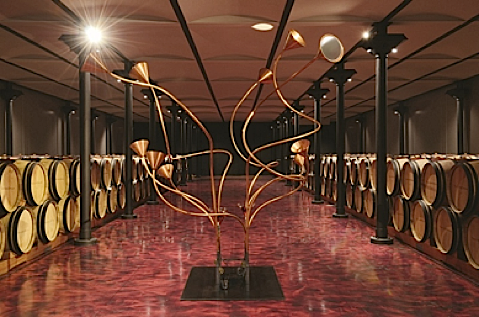 even after an hour with food,
with a modest nose, needing a long
time to emerge from its glass cocoon. It was definitely not made from
over-ripe
grapes, so its virtues are going to take time to develop.
even after an hour with food,
with a modest nose, needing a long
time to emerge from its glass cocoon. It was definitely not made from
over-ripe
grapes, so its virtues are going to take time to develop.
The
2008
L’Energia
($155-$170),
with
a
label
by
Rebecca
Horn,
lives
up
to
its
moniker: it’s got a big nose with a woody, but not oaky, bouquet, and a
remarkable herbaceous content of violets and mint. The tannins are
already
loose, and I enjoyed this youthful wine enormously, knowing it will get
better
and better over the next decade.
Heinz said it
had the “lushness of the Mediterranean,” which is an apt description of
a
vintage that began wet, had a dry, hot summer, whose temperatures were
lowered
by the northerly tramontana winds, so that at harvest a “brutal drop in
temperature” turned out to be something of a blessing to prevent
over-ripening.
The
same
vintages
of
Le
Serre
Nuove
showed
exactly
the
same
characteristics
but
in
a
lighter, more approachable style.
Although
the
2009
was
not
available
for
tasting
yet,
Heinz
called
it
a
“very
difficult
vintage to make. The grapes were picked early and the tannins are soft
and the
wine will only be of medium weight.” No name for that one yet, but
maybe he’ll
call it “mal di testa,” which
is Italian for headache.
Click Here to Return to John Mariani's Homepage
❖❖❖
TRUER WORDS WERE NEVER SPEWED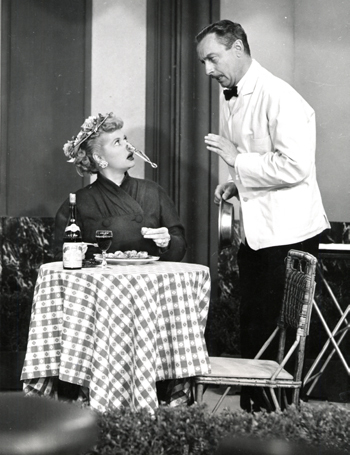
"Twenty minutes later, possibly under their own steam, the snails arrive. Vesuvian, they bubble and smoke in a magma of astringent garlic butter and parsley. We grasp them with the spring-loaded specula and gingerly unwind the dark gastropods, curling like dinosaur boogers. They go on and on, expanding onto the plate as if they were alien. We have to cut them in half, which is just wrong. The rule with snails is: Don’t eat one you couldn’t get up your nose."—AA Gill, "L'Amis Louis," Vanity Fair.
 THEN
LEAVE HER TO DO THE
DISHES
THEN
LEAVE HER TO DO THE
DISHES
WHILE YOU SNORE OFF TO SLEEP
"To
me,
cooking
is
like
making
love.
You
see
great
ingredients,
take
them
home,
and
make
something
exciting." —Wolfgang Puck, at a panel
discussion for Tufts U. students.
❖❖❖
Mariani's Quick Bytes
If you would like to be featured in our Quick Bytes section please visit our advertisement page at www.JohnMarianiMedia.com
*Paid Advertisement*
|
Tattered Cover
On May 31 at Tattered Cover on
Colfax in Denver, CO,
Melissa Coleman
will read from This Life Is in Your Hands: One Dream, Sixty Acres, and
a Family Undone, a memoir that takes place during the early days of the
natural living and organic food movements. 7:30pm. Tattered Cover
303-322-7727, or visit www.melissacoleman.com
for more info. |
|
"Chefs to the Rescue"
Chefs from Alabama, Georgia,
Florida and D.C. will cook up a special
night in Auburn, Alabama
on Wednesday, June 1
to benefit tornado relief. The event, “Chefs to the Rescue,” will
feature a meet and taste from more than 20 chefs. Their culinary
creations will be paired with beers and wines donated from across the
U.S. Tickets are $100; a VIP ticket is $1,000 and provides a one-on-one
with some of the top culinary talent in the country. 100% of the
proceeds will go to the Auburn Family All-In Tornado Relief Fund. For
more information and to purchase tickets visit http://www.facebook.com/?ref=home#!/AUChefstotheRescue |
|
Tibetan Aid Project
On June 1 at the Arader
Gallery in New York, NY
the Tibetan Aid Project will host the benefit gala Taste & Tribute
in efforts to support the cultural and spiritual heritage of
Tibet.
Guests will enjoy an exquisite four-course meal prepared by a superbly
talented team of New York chefs including Missy Robbins, George Mendes,
Gavin Kaysen, and Michael Laiskonis. There will also be a live
auction
which will feature Tibetan artwork and luxurious getaways. $475 pp.
Visit www.TibetanAidProject.org |
|
Melissa Coleman
On June 2 at the Aspen Center
for Environmental Studies in Aspen,
CO,
Melissa Coleman will read from This Life Is in Your Hands: One Dream,
Sixty Acres, and a Family Undone, a memoir that takes place during the
early days of the natural living and organic food movements. 5:30pm.
ACES, 970-925-575, or visit www.melissacoleman.com
for more info. |
|
db Bistro Moderne and Esquire
On June 3, db Bistro Moderne
and Esuire will host a "State of the Hamburger" lunch and panel
discussion. The 4-course menu includes the DB Burger (stuffed with
short ribs and foie gras) paired with a 2009 Languedoc; oanelists
include Daniel Boulud and the execuitve chef of McDonald's--and you get
a copy of the new Esquire cookbook. $110 per person. Call 212-391-2400
or visit http://db-bistro-moderne-nyc.ticketleap.com/esquire-hamburger-panel/
|
|
"Dinner by the Book"
On June 6 in NYC,
The YWCA-NYC will host "Dinner by the Book" at Negril Village with
special guest with special guest Victoria Brown, author of Minding Ben
(Voice/Hyperion). Tickets are $40 and include tasting menu, autographed
copy of Minding Ben, and a tax-deductible donation to the YWCA.
Reservations required. For tickets, contact sraassi@ywcanyc.org
<mailto:sraassi@ywcanyc.org> or call (212) 735-9708. |
|
HENRY's
On June 6 in NYC,
Maestro Steven Blier continues the spring season of HENRY¹s
³Sing for
Your Supper.² An evening of great music provided from New York
City¹s
rising stars of musical theatre and opera and Chef Mark Barrett¹s
famous Baked Veal Ricotta Meatballs featured in the 3-course,
Italian-American prix-fixe dinner. ³Sing for Your
Supper² will sell
out, so please reserve your table now! Call 212-866-0600 for
reservations or visit www.henrysnyc.com. |
|
Powell's Books
On June 6 at Powell's Books on
Hawthorne in Portland, OR
Melissa
Coleman will read from This Life Is in Your Hands: One Dream, Sixty
Acres, and a Family Undone, a memoir that takes place during the early
days of the natural living and organic food movements. 7:30pm. Powell's
503-228-4651, or visit www.melissacoleman.com
for more info. |
|
The Booksmith
On June 8 at The Booksmith in San Francisco, CA, Melissa
Coleman will
read from This Life Is in Your Hands: One Dream, Sixty Acres, and a
Family Undone, a memoir that takes place during the early days of the
natural living and organic food movements. 7:30pm. The Booksmith
415-863-8688, or visit www.melissacoleman.com
for more info. |
|
Apsleys, a Heinz Beck Restaurant
On June 9, The Lanesborough, London,
and Domaine Leflaive, will host an exclusive tasting event at ‘Apsleys,
a Heinz Beck Restaurant.’ Adam Brett-Smith, MD of Corney &
Barrow,
will be on-hand throughout the dinner to lead guests through each of
the rare vintages offered, paired with 7-courses designed by
Three-Michelin starred Chef Heinz Beck. £250 pp. Call +011
44(0)20
7259 5599 or visit www.lanesborough.com
|
Add your Quick Bytes HERE |
Any of John Mariani's books below
may be ordered from amazon.com.
" A fact-filled,
entertaining history [that] substantiates its title with hundreds of
facts in this meaty history of the rise of Italian food culture around
the
globe. From Charles Dickens's journey through Italy in 1844 to
20th-century
immigrants to America selling ice cream on the streets of New Orleans,
Mariani
constantly surprises the reader with little-known culinary anecdotes
about
Italy and its people, who have made pasta and pizza household dishes in
the
U.S. and beyond."--Publishers Weekly "Equal
parts
history,
sociology,
gastornomy,
and
just
plain
fun,
How
Italian
Food
Conquered
the
World
tells
the
captivating
and
delicious
story
of
the
(let's
face
it)
everybody's
favorite
cuisine
with
clarity,
verve
and
more
than
one
surprise."--Colman
Andrews,
editorial
director
of
The
Daily Meal.com. "A
fantastic and fascinating read, covering everything from the influence
of Venice's spice trade to the impact of Italian immigrants in
America and the evolution of alta cucina. This book will serve as a
terrific resource to anyone interested in the real story of Italian
food."--Mary Ann Espositio, hosty of PBS-TV's Ciao Italia. "John
Mariani
has
written
the
definitive
history
of
how
Italians
won
their
way
into
our
hearts,
minds,
and
stomachs.
It's
a
story
of
pleasure
over
pomp
and
taste
over
technique."--Danny
Meyer,
owner
of
NYC
restaurants
Union
Square
Cafe,
Gotham
Bar
&
Grill, The Modern,
and Maialino.
|
 |
 |
 |
 |
 |
 |
 |
 |
 Everett
Potter's
Travel
Report:
Everett
Potter's
Travel
Report: 
 Eating
Las
Vegas is the new on-line site for Virtual Gourmet
contributor John
A. Curtas., who since 1995 has been commenting on the Las Vegas food
scene and reviewing restaurants for Nevada Public Radio. He is
also
the restaurant critic for KLAS TV, Channel 8 in Las Vegas, and his past
reviews can be accessed at KNPR.org.
Click
on
the
logo
below
to
go
directly
to
his
site.
Eating
Las
Vegas is the new on-line site for Virtual Gourmet
contributor John
A. Curtas., who since 1995 has been commenting on the Las Vegas food
scene and reviewing restaurants for Nevada Public Radio. He is
also
the restaurant critic for KLAS TV, Channel 8 in Las Vegas, and his past
reviews can be accessed at KNPR.org.
Click
on
the
logo
below
to
go
directly
to
his
site.

Tennis Resorts Online: A Critical Guide to the World's Best Tennis Resorts and Tennis Camps, published by ROGER COX, who has spent more than two decades writing about tennis travel, including a 17-year stretch for Tennis magazine. He has also written for Arthur Frommer's Budget Travel, New York Magazine, Travel & Leisure, Esquire, Money, USTA Magazine, Men's Journal, and The Robb Report. He has authored two books-The World's Best Tennis Vacations (Stephen Greene Press/Viking Penguin, 1990) and The Best Places to Stay in the Rockies (Houghton Mifflin, 1992 & 1994), and the Melbourne (Australia) chapter to the Wall Street Journal Business Guide to Cities of the Pacific Rim (Fodor's Travel Guides, 1991).


The Family Travel Forum
- A community for those who
"Have Kids, Still Travel" and want to make family vacations more fun,
less work and better value. FTF's travel and parenting features,
including
reviews of tropical and ski resorts, reunion destinations, attractions,
holiday
weekends, family festivals, cruises, and all kinds of vacation ideas
should be
the first port of call for family vacation planners. http://www.familytravelforum.com/index.html
ALL YOU NEED BEFORE YOU GO


MARIANI'S VIRTUAL GOURMET NEWSLETTER is published weekly. Editor/Publisher: John Mariani.
Contributing Writers: Christopher
Mariani, Robert Mariani,
John A. Curtas, Edward Brivio, Mort
Hochstein, Suzanne Wright, and
Brian Freedman. Contributing
Photographers: Galina Stepanoff-Dargery, Bobby Pirillo. Technical
Advisor:
Gerry McLoughlin.
Click
Here
to
Return
to
John
Mariani's
Homepage
© copyright John Mariani 2011
